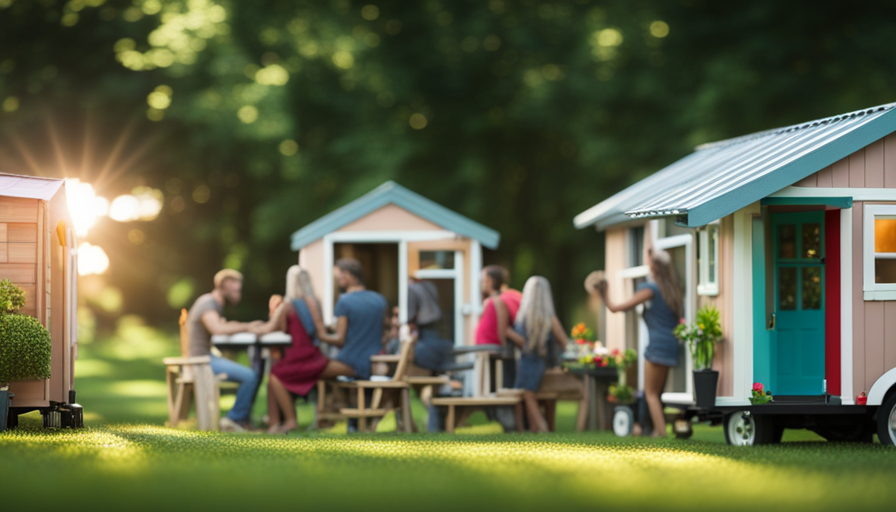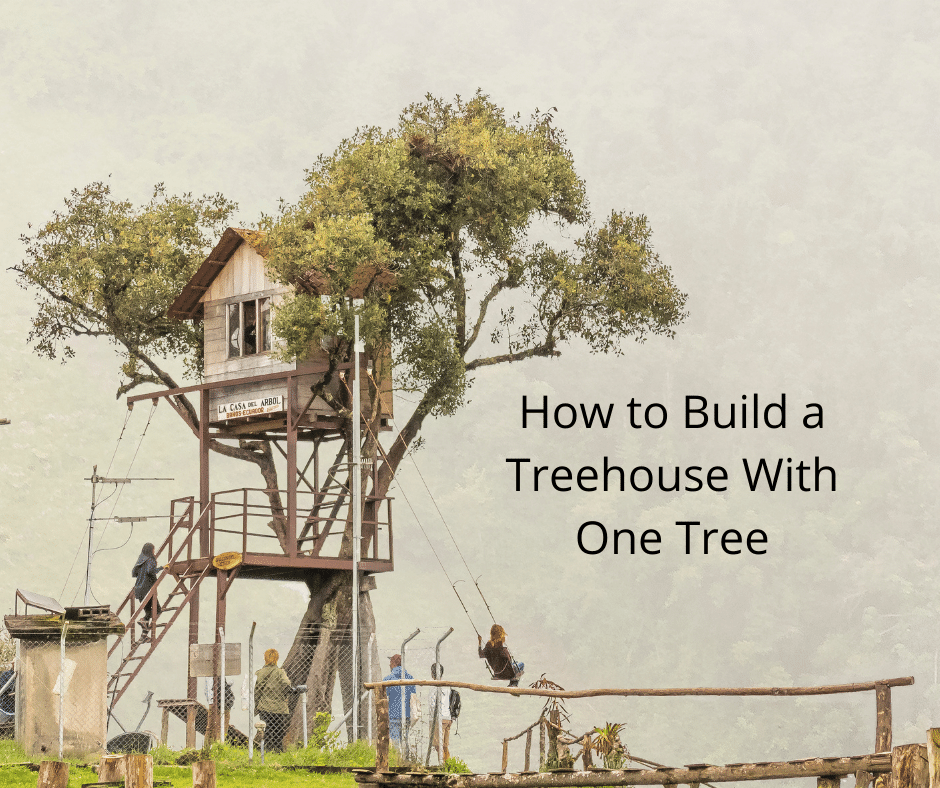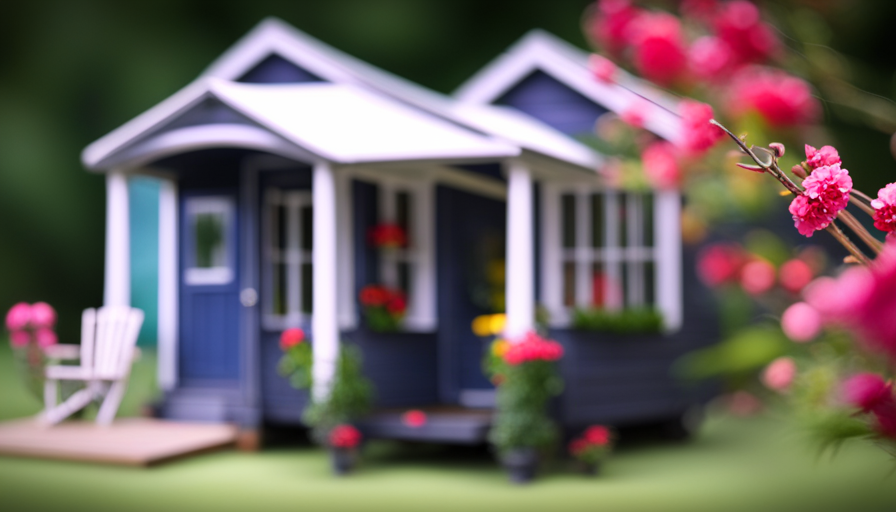Living in a small house, I initially believed it would result in less waste. However, I quickly realized that dealing with waste in a limited living space can be difficult. But don’t worry, my fellow tiny house residents, I have researched and discovered some sustainable solutions.
From composting toilets to recycling techniques, this article will guide you on how to properly dispose of waste in your tiny abode.
Let’s make the most of our small spaces while being mindful of the environment!
Key Takeaways
- Composting toilets are a sustainable alternative for waste management in tiny houses, as they separate solid and liquid waste and convert it into compost that can be used as fertilizer.
- Greywater systems can be implemented in tiny houses to reuse water from sinks, showers, and washing machines for non-potable purposes, contributing to water conservation efforts.
- Recycling techniques, such as separating waste into different bins and repurposing items, can help reduce waste in tiny houses and promote sustainability.
- Innovative waste disposal solutions like compact composting toilets, waterless toilets, incinerating toilets, and biogas digesters are available for small living spaces, promoting efficient use of resources and minimizing environmental impact.
Waste Management Challenges in Tiny Houses
While living in a tiny house, I face several waste management challenges. One of the main challenges is dealing with human waste. Since most tiny houses are off-grid, traditional plumbing systems aren’t always an option. That’s where composting toilets come in.
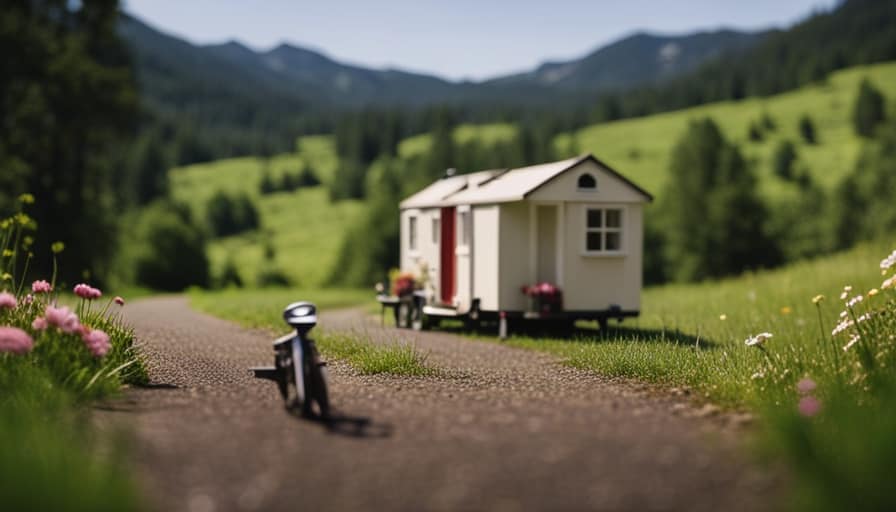
Composting toilets are a sustainable and eco-friendly alternative that allows me to manage my waste efficiently. These toilets separate solid waste from liquid waste, and with the help of organic materials like sawdust or coconut coir, the waste is decomposed into compost. This compost can then be used as fertilizer for plants, completing the cycle.
Composting toilets aren’t only practical for off-grid living but also contribute to a healthier environment by reducing water usage and preventing pollution from traditional sewage systems.
Composting Toilets: A Sustainable Solution for Waste Disposal
Using composting toilets is a sustainable and eco-friendly way to dispose of waste in my tiny house. Here are four reasons why composting toilets are a great alternative for eco-friendly waste management:
-
Water Conservation: Composting toilets use little to no water, reducing water consumption and conserving this precious resource.

-
Nutrient-rich Soil: The waste from composting toilets can be converted into nutrient-rich compost, which can be used to nourish plants and gardens.
-
Odor Control: Composting toilets are designed to minimize odors through proper ventilation and the use of natural materials, ensuring a pleasant living environment.
-
Off-grid Capability: Composting toilets are ideal for off-grid living as they don’t require a connection to a sewage system, allowing for greater independence and flexibility.
By implementing composting toilets, I can effectively manage waste in an eco-friendly manner.

Now, let’s explore another sustainable solution for waste disposal in tiny house living: implementing greywater systems.
Implementing Greywater Systems in Tiny House Living
With proper planning and installation, I can effectively implement greywater systems in my tiny house living. Greywater refers to the water from sinks, showers, and washing machines that can be reused for non-potable purposes such as irrigation and flushing toilets. By implementing greywater systems, I can reduce my water consumption and contribute to water conservation efforts. To ensure the success of my greywater system, I will use eco-friendly cleaning products to minimize the presence of harmful chemicals in the water. Additionally, I will incorporate water conservation techniques such as low-flow fixtures and water-efficient appliances to further reduce my water usage. By taking these steps, I can create a sustainable and environmentally friendly living environment in my tiny house.
| Water Conservation Techniques | Eco-Friendly Cleaning Products |
|---|---|
| Use low-flow fixtures | Choose biodegradable options |
| Install water-efficient appliances | Avoid products with harmful chemicals |
| Collect and reuse rainwater | Opt for natural cleaning alternatives |
Recycling Techniques for Waste Reduction in Tiny Houses
To minimize waste in my tiny house, I can incorporate recycling techniques that will help reduce the environmental impact of my lifestyle. By practicing sustainable practices and engaging in community initiatives, I can contribute to a healthier planet.
Here are four recycling techniques that I can implement:
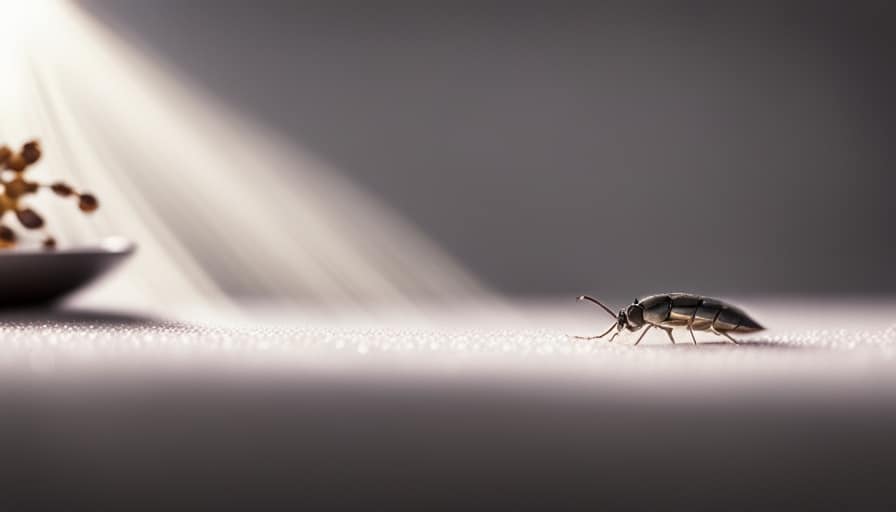
-
Separate waste: I can have separate bins for different types of waste, such as paper, plastic, glass, and metal. This will make it easier to recycle and ensure that each material is properly processed.
-
Composting: I can set up a composting system for organic waste, such as food scraps and yard trimmings. This won’t only reduce landfill waste but also create nutrient-rich soil for my garden.
-
Repurposing: Instead of throwing away items that I no longer need, I can find creative ways to repurpose them. For example, I can turn old jars into storage containers or use scraps of fabric for crafts.
-
Educate and inspire: I can share my knowledge and experiences with others, encouraging them to adopt recycling techniques in their own lives. By spreading awareness and promoting sustainable practices, we can make a collective impact on waste reduction.
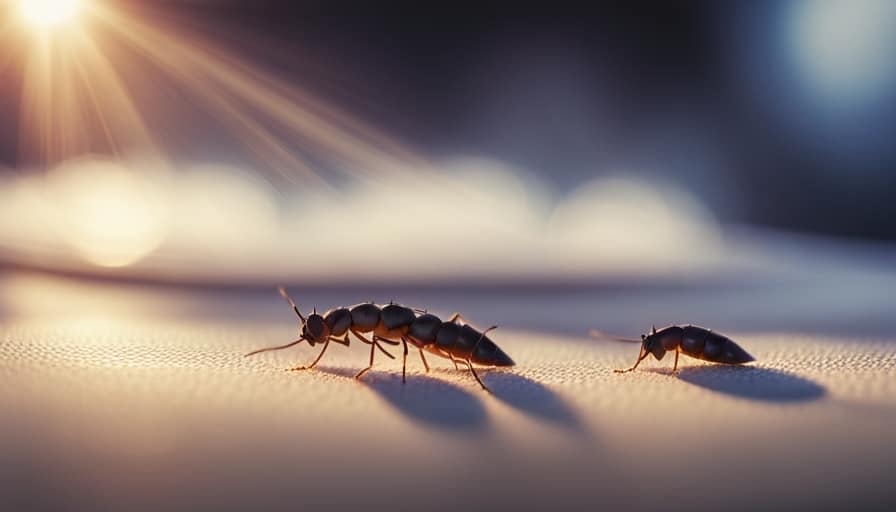
Innovative Solutions for Waste Disposal in Small Living Spaces
An innovative solution for waste disposal in my small living space is installing a compact and efficient composting toilet. This eco-friendly waste management option allows me to convert organic waste into nutrient-rich compost, which can be used in my garden or disposed of safely.
Composting toilets are designed to separate liquid and solid waste, reducing odor and the need for water. They’re also easy to install and maintain, making them ideal for small living spaces.
Another innovative waste disposal option is a greywater system, which collects and treats water from sinks, showers, and laundry machines for reuse in irrigation or flushing toilets.
These innovative solutions not only help conserve resources but also minimize environmental impact, making them an excellent choice for those who desire to serve others and the planet.

Frequently Asked Questions
Can I Use a Regular Toilet in a Tiny House or Do I Have to Use a Composting Toilet?
I can use a regular toilet in a tiny house, but a composting toilet is more environmentally friendly. The regular toilet requires plumbing and can be costly, while the composting toilet saves water and produces nutrient-rich compost.
How Do I Dispose of Hazardous Waste, Such as Batteries or Cleaning Chemicals, in a Tiny House?
Disposing of hazardous waste in a tiny house requires careful consideration. I manage my tiny house wastewater by using eco-friendly alternatives, like rechargeable batteries and natural cleaning products, to minimize harmful impact on the environment.
Are There Any Restrictions on Where I Can Park My Tiny House in Terms of Waste Disposal?
There may be parking restrictions for tiny houses in terms of waste disposal, but there are various waste disposal options available. It’s important to research and follow local regulations to ensure environmentally conscious waste management.
What Are the Options for Disposing of Larger Items, Such as Furniture or Appliances, in a Tiny House?
When it comes to larger items in my tiny house, I have options. I can recycle, donate, or repurpose furniture and appliances. As for electronic waste, I make sure to dispose of it safely.

Are There Any Regulations or Guidelines for Disposing of Waste From a Tiny House, Particularly in Terms of Environmental Impact?
There are regulations and guidelines for waste disposal in a tiny house to minimize environmental impact. It’s important to research local laws, use composting toilets, recycle, and properly dispose of hazardous materials to be environmentally conscious.
Conclusion
In conclusion, managing waste in a tiny house can be a challenging but rewarding endeavor. By implementing sustainable solutions such as composting toilets, greywater systems, recycling techniques, and innovative waste disposal methods, we can minimize our environmental impact and live more harmoniously with nature.
So let’s embrace the tiny house lifestyle and take proactive steps to responsibly dispose of our waste, making a positive difference for both ourselves and the planet.
I’m Theodore, and I love tiny houses. In fact, I’m the author of Tiny House 43, a book about tiny houses that are also tree houses. I think they’re magical places where imaginations can run wild and adventures are just waiting to happen.
While tree houses are often associated with childhood, they can be the perfect adult retreat. They offer a cozy space to relax and unwind, surrounded by nature. And since they’re typically built on stilts or raised platforms, they offer stunning views that traditional homes simply can’t match.
If you’re looking for a unique and romantic getaway, a tree house tiny house might just be the perfect option.



